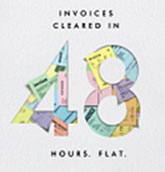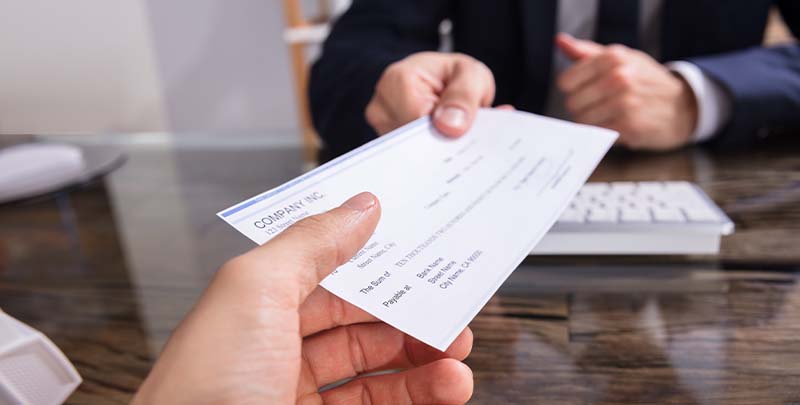 3 mins read
3 mins read Jun 24, 2024
Jun 24, 2024
Different types of Cheques in banking
Cheques are a fundamental part of banking in India, offering a secure and efficient way to transfer funds. Understanding the different types of cheques can help you manage your finances better and ensure you're using the right one for your needs.
What is a cheque?
A cheque is a written, dated and signed instrument that directs a bank to pay a specific amount of money to the bearer or named recipient. It is used for various transactions, such as paying bills, transferring funds, and withdrawing cash from your account.
Types of cheques
1. Bearer cheque
A bearer cheque is payable to the person holding or bearing the cheque. It can be transferred from one person to another without any endorsement. These cheques are typically used for quick cash withdrawals.
Example: You write a cheque for ₹10,000 payable to "Bearer." Anyone holding the cheque can encash it at the bank.
2. Order cheque
An order cheque is payable only to the person whose name is mentioned on the cheque or to anyone endorsed by that person. This type of cheque provides an added layer of security since it cannot be cashed by just anyone.
Example: You write a cheque for ₹15,000 payable to "Mr. A or order." Only Mr. A or someone endorsed by him can cash it.
3. Crossed cheque
A crossed cheque has two parallel lines on the top left corner or across the cheque. It can only be deposited directly into a bank account and cannot be immediately cashed. This ensures a secure transfer of funds.
Example: You write a cheque for ₹20,000 to "Mr. A" and cross it. Mr. A must deposit it into his bank account.
4. Open cheque
An open cheque is a cheque that is not crossed and can be cashed at any bank, not just the issuing bank. It can also be transferred by simple delivery.
Example: You write an open cheque for ₹25,000 to "Mr. B." Mr. B can cash it at any bank.
5. Post-dated cheque
A post-dated cheque is one that is dated for a future date. It cannot be cashed or deposited until the date specified on the cheque.
Example: You write a cheque dated for 15th July 2024 for ₹30,000 to "Mr. A." Mr. A can only encash or deposit it after 15th July 2024.
6. Stale cheque
A stale cheque is one that has not been presented for payment within three months from the date it was issued. After this period, it becomes invalid.
Example: You issue a cheque on 1st January 2024, but Mr. B tries to cash it on 5th April 2024. The cheque is now stale and cannot be processed.
7. Traveller’s cheque
A traveller’s cheque is a pre-printed, fixed-amount cheque designed for travellers to exchange for local currency without the risk of carrying cash. Traveller's cheques do not expire and can be used for future trips.
Example: You buy traveller’s cheques worth ₹50,000 before going on an international trip. You can cash these cheques at your destination.
8. Self cheque
A self cheque is drawn in the name of the account holder. It is used to withdraw money from your own account.
Example: You write a cheque to "Self" for ₹10,000 to withdraw cash from your own account.
9. Banker’s cheque
A banker’s cheque is issued by the bank itself, guaranteeing the payment. It is typically used for high-value transactions and payments where certainty is required.
Example: You need to make a payment of ₹1,00,000 to a supplier. You get a banker’s cheque from your bank to ensure the payment is guaranteed.
How does one fill a cheque?
Filling out a cheque correctly is crucial to ensure it is processed smoothly:
1. Date: Write the date in the format DD/MM/YYYY.
2. Payee's name: Write the name of the person or entity to whom the cheque is to be paid.
3. Amount in numbers: Write the amount in the box provided.
4. Amount in words: Write the amount in words to avoid any alterations.
5. Signature: Sign the cheque in the bottom right corner.
Number of parties involved with a cheque
Typically, three parties are involved in a cheque transaction:
1. Drawer: The person who writes the cheque.
2. Drawee: The bank on which the cheque is drawn.
3. Payee: The person to whom the cheque is payable.
Elements of cheques
- Date: It ensures the cheque is valid and determines its validity period.
- Payee: It identifies the recipient of the funds.
- Amount: It is mentioned both in numbers and words to prevent fraud.
- Signature: It provides authorisation to the cheque.
How to cancel a cheque?
To cancel a cheque, draw two parallel lines across the cheque and write "CANCELLED" between them. This prevents the cheque from being used for a transaction.
What is a cheque leaf?
A cheque leaf is a single cheque from your cheque book. It contains all the necessary fields to complete a cheque transaction.
Differences between depositing and cashing a cheque
- Depositing a cheque: When you deposit a cheque, the amount written on the cheque is credited to your bank account. For example, if you receive a cheque from a client, you can deposit it into your account, and the funds will reflect in your account balance once processed by the bank.
- Cashing a cheque:: When you cash a cheque, you receive the cheque amount in cash immediately. For instance, if you write a cheque payable to yourself or "Bearer," you can take it to the bank and get the specified amount in cash on the spot.
Example: You receive a cheque for ₹5,000 from a friend. If you deposit the cheque, the funds will be added to your account balance after the bank processes it. If you decide to cash the cheque, you will receive ₹5,000 in cash immediately from the bank.
Axis Bank offers a range of services to make cheque transactions smooth and hassle-free. Whether you're depositing a cheque or cashing it, Axis Bank ensures a seamless experience. If you're looking for a reliable banking partner, consider opening a Savings Account with Axis Bank to enjoy these benefits and more.
Also Read: Guide to the cash deposit limit in a Savings Account
FAQs
What is a cheque number?
A cheque number is a unique six-digit number printed on the cheque, used to identify and track the cheque.
When will banks refuse to make the cheque payment?
Banks may refuse to pay if the cheque is post-dated, stale, lacks sufficient funds, or contains errors like mismatched signatures.
Is it possible to use a cancelled cheque several times?
No, a cancelled cheque is usually provided as proof of your bank account details and cannot be used for transactions.
How long are cheques valid for?
Cheques are valid for three months from the date of issuance. After this period, they become stale and cannot be processed.
How to fill cheque deposit slip?
- Account number: Write your account number.
- Cheque number: Write the cheque number.
- Payee name: Write your name.
- Amount: Write the amount in numbers and words.
- Date and signature: Provide the date and your signature.
Disclaimer: This article is for information purpose only. The views expressed in this article are personal and do not necessarily constitute the views of Axis Bank Ltd. and its employees. Axis Bank Ltd. and/or the author shall not be responsible for any direct / indirect loss or liability incurred by the reader for taking any financial decisions based on the contents and information. Please consult your financial advisor before making any financial decision.












